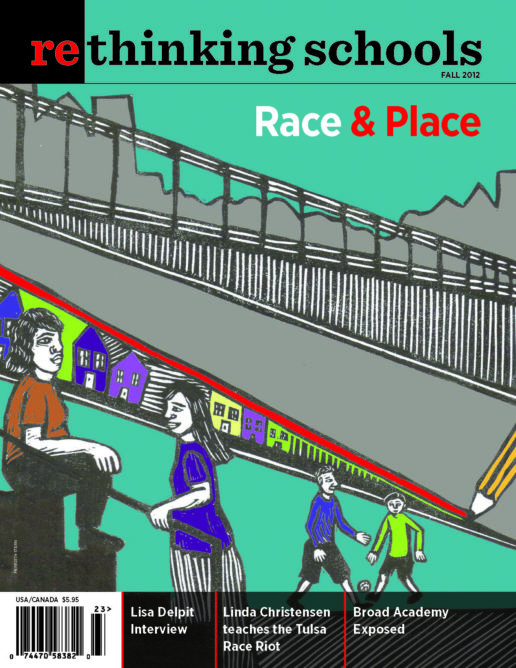Preview of Article:
Saving Mango Street
Illustrator: radicalgraphics.org
St. Helens, Oregon, is a rural town about 30 minutes northwest of Portland; it was all I’d ever known. I was used to the flannels and work boots and the fact that most kids’ dads worked at the mill. I wasn’t allowed to play at a friend’s house after I told my mom that my friend’s stepdad wouldn’t let us in his shed because he was growing funny plants. I shopped at Target for school clothes when we took a rare trip to Portland. Almost everyone I knew was working-class and white.
I first learned about cultural diversity and racial justice in Mr. Sanderson’s middle school English class. Sure, we learned about grammar and literary concepts, but Sanderson opened our eyes—or at least my eyes—to the fact that the world was different outside of St. Helens. We read a book called The House on Mango Street by Sandra Cisneros and learned about a different culture, but also about a community with striking similarities to our own.
The main character in the novel, Esperanza, a 13-year-old Chicana, grows up in an impoverished neighborhood in Chicago. Mexican American culture and themes of social class and gender are interwoven through the novel’s vignettes. I could relate to living in a poor area with a short supply of opportunity. And, like Esperanza, I realized how important it was to remember my roots and to give back to the community from which I came.

